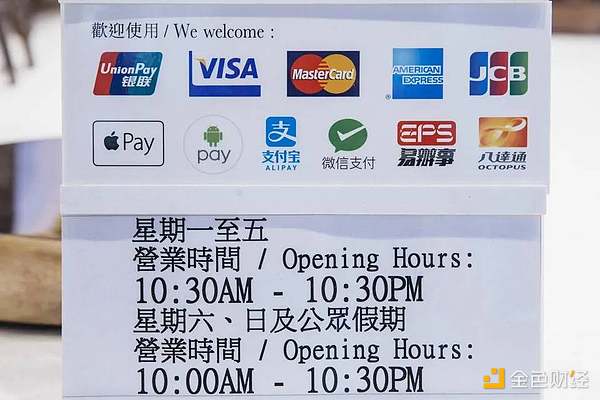Written by: Christian Catalini Compiled by: TechFlow
Stripe Inc. is headquartered in South San Francisco, California, United States, Tuesday, April 16, 2024.
Stripe 's recent acquisition of the stablecoin orchestration startup Bridge has caused a huge stir in the cryptocurrency community. This is the first time that a major payment company has invested more than a billion dollars to promote the development of this technology. Although this is not Stripe's first foray into the cryptocurrency field, the timing this time is particularly different. At present, the market's enthusiasm for stablecoins is unprecedented, and Bridge's co-founder Zach Abrams has successfully shaped the company into the "Stripe of the cryptocurrency world", which has attracted the attention of the Collison brothers.
Many people may not have noticed that although Bridge is worth $1.1 billion to Stripe, it may not have reached this valuation on its own. This is not due to a lack of ability on the team—Zach and his team have assembled a group of top engineers—but because it is extremely difficult to make money in the stablecoin space. Whether it is issuance, orchestration (i.e., conversion between different stablecoins), or integration with the traditional banking system, achieving long-term profitability is a major challenge.
So why is this? After all, Circle and Tether have made huge profits against the backdrop of rising interest rates in the past two years, and with the market's anticipation for Circle's listing growing, the market seems ready for further growth and consolidation.
However, the reality is that the network effects in the stablecoin market may be far less strong than expected, nor is it a "winner takes all" situation. In fact, stablecoins may be just loss-making lead products, and may even become loss-making projects without the necessary complementary assets. While industry insiders often believe that liquidity is the main reason why only a few stablecoins have been able to dominate, the reality is much more complicated.
What are some common misconceptions about stablecoins? Let's dig deeper.

Paolo Ardoino, CEO of Tether Holdings Ltd.
Photographer: Nathan Laine/Bloomberg© 2023 Bloomberg Finance LP
1. Stablecoins need a supporting business model
When designing Libra, we realized that stablecoins must rely on a supporting business model to succeed. The Libra ecosystem is built around a non-profit association that brings together wallets, merchants, and digital platforms to support the issuance of stablecoins and payment networks.
It is not sustainable to achieve stablecoin profitability solely through reserve interest. We realized this early on when we planned to issue stablecoins backed by low interest rates (such as the euro) or even negative interest rates (such as the yen). Stablecoin issuers like Circle and Tether seem to have failed to notice that the current high interest rate environment is only a temporary anomaly, and a sustainable business model cannot be built on the basis that this may change quickly.

Of course, stablecoins can make money not only through "stock" but also through "flow". Circle's recent increase in redemption fees shows that they are beginning to realize this. However, this practice violates a basic principle in the payment field: in order to win the trust and loyalty of users, the entry and exit of funds should be seamless. While exit fees may be acceptable in the gaming industry, in mainstream payments, such fees will undermine people's basic expectations of the free flow of funds. Therefore, transaction fees may become a potential source of revenue, but it is challenging to implement these fees on the blockchain without strict control of the protocol. Even then, there is no way to charge fees for transactions between users of the same wallet provider. These are scenarios we have explored in depth in the Libra project, revealing the complexity and uncertainty of the business model of nonprofit associations.
So what are the options for stablecoin issuers? Unless they rely on short-lived regulatory loopholes—which are unlikely to last long (more on this in the next section)—they need to start competing with their own customers.
Circle’s recent series of moves, including the launch of a programmable wallet, a cross-chain protocol, and the Mint program, clearly show where the company is headed. But this is not good news for many of its close partners. This is not uncommon in platform strategies: never let a partner come between you and your customers. Yet many exchanges and payment companies have made this mistake by incorporating Circle into their ecosystems. To survive, Circle must transform into a payments company, even if it means encroaching on the markets of its allies. This model is not new—think of Amazon’s relationship with third-party sellers, travel platforms with hotel chains, or Facebook with news publishers. When platforms become successful, they tend to take functionality that they once relied on partners to own and monetize what works. Developers in the Apple and Google ecosystems are all too familiar with this.
Stripe faces no such dilemma. As one of the world’s most successful payments companies, they have figured out how to build and monetize a lean software layer on top of global money flows — a model that scales efficiently through network effects without relying on country-specific banking licenses. Stablecoins accelerate this process, enabling networks that were previously constrained by legacy institutions (like card companies) to overcome the last mile problem and provide greater value to merchants and consumers by building bridges between Stripe and domestic banks and payment networks.
That’s why PayPal launched its own stablecoin, and other fintech giants like Revolut and Robinhood are following suit. Unlike before, they are starting to compete on open protocols, but can enhance their core business by adapting their stablecoin strategy. In doing so, they will make stablecoins extremely cheap and convenient for consumers and businesses.

Argentine peso notes worth $1,000 are arranged in Buenos Aires, Argentina, on Tuesday, September 26, 2023
© 2023 Bloomberg Finance LP
2. Dollarization is not a product
The cryptocurrency space has seriously underestimated the impact of regulation on its future. We experienced this when we released the first version of the Libra white paper, which led to two years of difficult regulatory conversations to ensure that the project met the expectations of policymakers and regulators.
The same is true for stablecoins today. Many believe that stablecoins can seamlessly provide consumers and businesses with low-cost global dollar accounts. After all, in times of crisis, people around the world would like to hold dollars in a “too big to fail” American financial institution. Moreover, one might think that the US government would support this trend because it would help consolidate the dollar’s position as the global reserve currency.
However, the reality is much more complicated. Although the United States has a lot to lose if its financial and sanctions infrastructure loses its position as the global standard—especially if the dollar’s “exorbitant privilege” is weakened as it has been before as a reserve currency—this does not mean that the US Treasury will always support accelerated dollarization. In fact, its Office of International Affairs may see this as a major challenge to diplomacy and global financial stability.
Those countries that value monetary policy independence, worry about capital flight in a crisis, and the stability of their domestic banks will strongly oppose the large-scale adoption of frictionless dollar stablecoin accounts. They will use all means to prevent or restrict these accounts, just as they resist other forms of dollarization. While it may not be realistic to ban crypto trading outright, as the growth of the internet has shown, there are still ways for governments to restrict access and inhibit mainstream adoption.
Does this mean that stablecoins will struggle in emerging economies with capital controls or concerns about capital flight? Not really—the rise of domestic stablecoins that follow local banks and regulatory frameworks is inevitable. While the U.S. dollar has historically dominated the stablecoin market, the landscape could change quickly. In Europe, banks, fintechs, and startups are scrambling to issue euro-denominated stablecoins following the implementation of the Markets in Crypto-Assets (MiCA) regulation. This strategy helps maintain the stability of local banking systems and will become increasingly important in regions such as Latin America, Africa, and Asia.
Clear regulation also allows banks to compete on a level playing field, something that has yet to happen in the U.S. In addition to issuing fully backed stablecoins, banks can also issue deposit tokens, increasing their returns through money creation. This puts pure stablecoin issuers without a banking license, discount window, or government deposit insurance at a significant competitive disadvantage.

In Hong Kong, China, icons of various payment services are displayed
Photographer: Anthony ... [+]© 2016 Bloomberg Finance LP
3. There will not be a single stablecoin winner
It is true that issuers can build network effects around the global liquidity and availability of their stablecoins, but as decentralized exchange (DEX) protocols know, liquidity is easy to come by and easy to lose. Similarly, the scale effects of branding and marketing may help issuers capture market share, but this does not always translate into a truly sustainable competitive advantage.
The reality is that the most central feature of a stablecoin—its peg to a currency like the dollar or the euro—is also its greatest weakness. Currently, these assets are treated as separate entities, but once regulation harmonizes standards and makes all stablecoins equally secure, individuals and businesses will treat them just like regular dollars or euros. While there is a legal distinction—as was evident in the Silicon Valley bank run—most people don’t care whether their dollars are held at Bank of America or JPMorgan Chase. That’s the magic of the dollar as a currency, and it’s all driven by the Fed.
Stablecoins will go through a similar process. While there may be dozens of stablecoins in every major market, the complexity will be invisible to users. Once that happens, the economics of stablecoins will favor companies with complementary business models or those that control the interface between a stablecoin and its backing asset, such as a bank deposit, U.S. Treasury, or money market fund.
This is bad news for pure stablecoin issuers like Circle, whose interfaces to the banking system rely on firms like BlackRock and BNY Mellon. These financial giants could become direct competitors. BlackRock, for example, already operates the world’s largest tokenized U.S. Treasury bond and buyback fund (BUIDL).
A common misconception in the history of technological disruption is that incumbents often successfully fend off challenges. Even Clayton Christensen’s classic example of disruptive innovation—the rise of a small disk drive manufacturer in the hard drive industry—isn’t entirely true: Seagate not only survived the disruption, but remains the world’s largest manufacturer to this day. In highly regulated industries like financial services, the challenges facing new entrants are even greater.

Tech companies with banking licenses, such as Revolut, Monzo, and Nubank, have already taken a favorable position in the market, and other companies may accelerate the acquisition of licenses to gain similar advantages. However, many players in the stablecoin market will find it difficult to compete with traditional banks and may face the risk of being acquired or failing. Banks and credit card companies will resist a market dominated by a few stablecoins, and instead tend to support a market structure composed of multiple interoperable and interchangeable issuers. When this happens, liquidity and availability will be driven by existing consumer and merchant distribution channels, which is exactly the advantage that new banks and payment companies like Stripe and Adyen have.
Fully backed stablecoins like USDC and USDT need to find high-frequency use cases, such as cross-border fund flows, to maintain their market position or attract a decentralized finance (DeFi) ecosystem that can introduce transparent fractionalization to support their narrow banking model. At the same time, deposit tokens or tokenized funds issued by banks will be more widely used due to their stronger economic foundations, especially at the consumer and institutional levels. Institutional users are particularly accustomed to managing diversified assets, such as money market funds, and are very concerned about the opportunity cost of their capital. In this area, the competition for stablecoin revenue sharing has already begun.
In each region, both banks and cryptocurrency companies will strive to become the key gateway to the local market. However, they need to seriously consider how stablecoins can lower the entry barriers for foreign competitors by connecting local payment systems with blockchain networks. After all, from a business perspective, the core change is that these systems will run on open protocols.

BIS General Manager Agustin Carstens
Photo by Vernon... [+] Yuen/NurPhoto via Getty Images
So what does all this mean?
The future looks bright for leading payment companies, fintechs and emerging banks. They can use stablecoins to streamline operations and accelerate global expansion. This also creates new opportunities for domestic stablecoin issuers, allowing them to enhance their status and prepare for global interoperability of payment systems - an area where stablecoins are expected to succeed and the BIS’s vision of an “internet of finance” may be difficult to achieve.
Leading cryptocurrency exchanges will also use stablecoins to more actively enter the consumer and merchant payment space, becoming strong competitors to major fintech and payment companies.
Although questions remain about how stablecoins will expand anti-money laundering and compliance controls as they become more popular, there is no doubt that they provide an opportunity to rapidly modernize the financial services system and change the industry leadership landscape.
 Jasper
Jasper
 Jasper
Jasper Hui Xin
Hui Xin Jasper
Jasper Jasper
Jasper Jasper
Jasper Jasper
Jasper Hui Xin
Hui Xin Hui Xin
Hui Xin Joy
Joy Jixu
Jixu